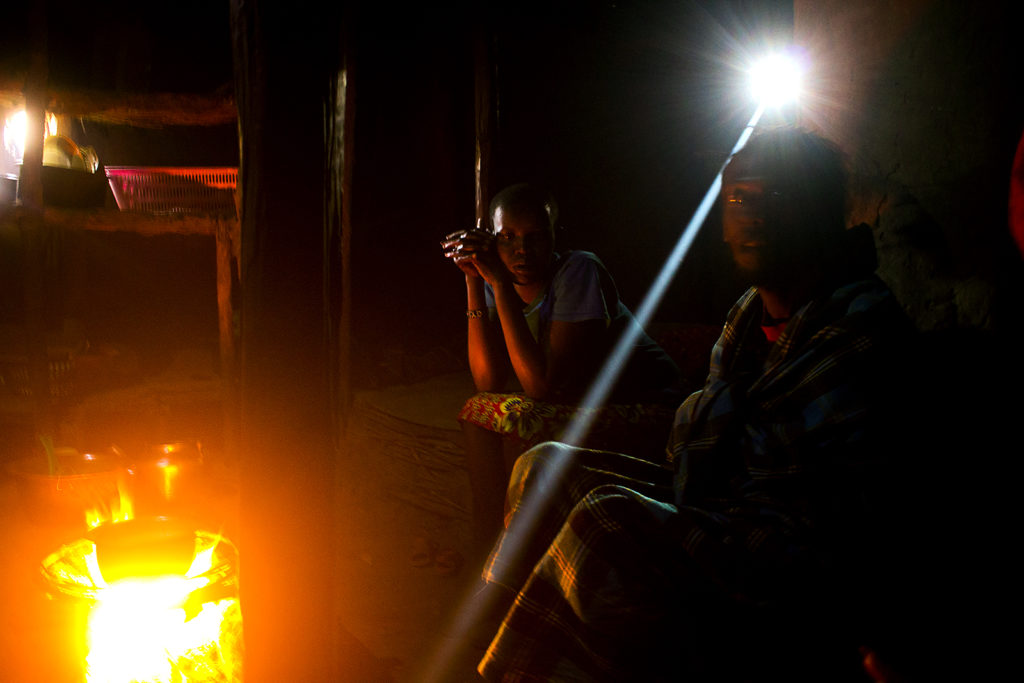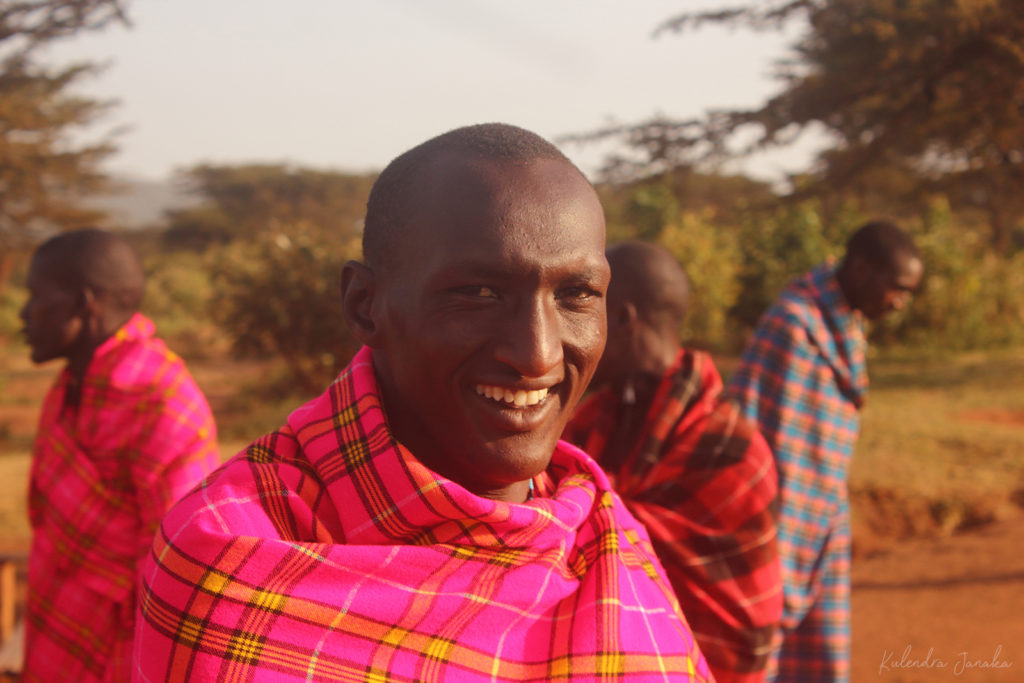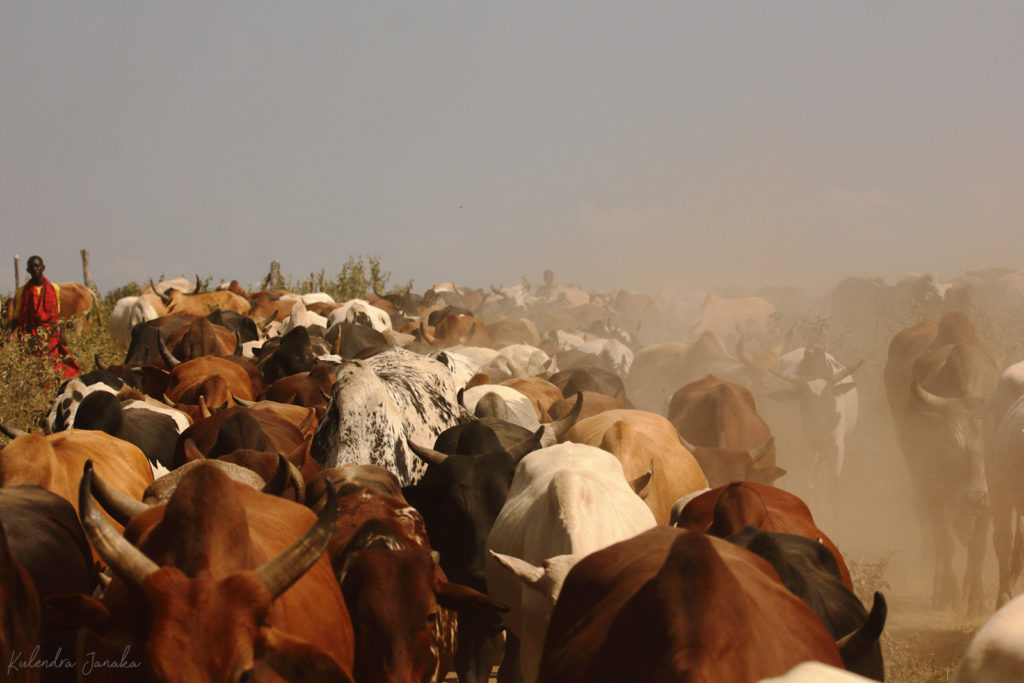Magical Kenya – Part 5: The Maasai
When you talk about Kenya and Masai Mara, it is impossible to not talk about the Maasai people (or Masai as they are more commonly known). The name Maasai, means “People who speak Maa”, the language spoken by them. The Maasai are indigenous people of present day Kenya and Tanzania and one of the many tribes who populated the plains. By the beginning of the 20th century, they were the largest of the tribes.
The Maasai have traditionally been a semi-nomadic pastoral community. However this doesn’t mean that they were always peaceful. One of the main parts in the Maasai social structure is the warrior class. In fact, it is impossible for a male Maasai not to be a warrior at some point in their life.
When I visited the Maasai village pretty much right outside my camp in Masai Mara, one of the Maasai took me inside of their houses to explain about their lifestyle. The Maasai houses are built of sticks and clay and thatched roofing. Given that they are built of natural material, there are no glass windows. The ventilation and the little light they get is through small air holes built in to the walls. While I was a bit surprised that they do not have larger openings to let the air in, but my host quickly explained it to me. The Maasai spend inside the houses only for a limited time for a day, mostly the night. So they don’t have much reason to have a lot of light inside the house. On the other hand one of the biggest threats they have during the night are the mosquitoes. When they have small air holes, they can cover it up with clothes and block any of the parasites from coming in.

The Maasai villages are generally surrounded by a thick fence that keeps predators like Hyenas, Wild Dogs and even Lions out. The fence is made of branches and reinforced by the thorny bushes they grow outside the fence. The livestock are kept in an enclosure inside the village. My host told me that not so long ago, they had to fight off lions who try to prey on the livestock.

The Maasai people are a semi-nomadic tribe who populate the Masai Mara plains. 
Cattles are one of the most important possessions of a Maasai.
My host explained to me that in the traditional social set up of the Maasai, the male children all go through a warrior phase. Children who are very small regardless of their sex, help out with day to day work including cattle grazing and milking. Once they reach the age of 14, the male children undergo a rite of passage that allows them to become warriors. The rite does include a circumcision, which in the past was carried out by the village herbal man/doctor. I read up later that while the circumcision is still considered an integral part of the Maasai culture, the constant education by medical personnel have now moved them towards getting it done in a medically safe environment like a hospital.
When a younger generation of warriors are inducted, the oldest generation of warriors move in to a role known as “Junior Elders”. These members will in due time become the elders of the tribe who will make socio-political decisions for the tribe. My host did explain that while in the past they were required to kill a Lion in order to become a warrior, this is no longer the case.
Throughout his explanations, I noticed that the females of the tribe were barely mentioned. This is unfortunately the case of many patriarchal cultures where a woman’s work is most of the time non-classified. While there seems to be a very clear social structure for the men, the women are generally divided into whether they are unmarried or married.
However, I found it very surprising was that it is the women who make the houses. In many cultures, especially patriarchal, building and heavy lifting related work are reserved mainly to men. However in the Maasai culture, it is exclusively a woman’s job. As the Maasai are semi-nomadic, the house building happens in regular intervals between 7-10 years and whenever a young Maasai couple marry.
When the host went on to explain about the Maasai lifestyle, he explained that the traditional lifestyle has changed to various levels. Their original monotheistic religion is slowly getting assimilated with other religions such as Christian denominations. The children do go to schools and some of them want to move away from the pastoral lifestyle. However good access to medical facilities have meant that on average the Maasai live longer. One of the traditions that I was happy to hear that is not being practiced anymore was female circumcision. Whatever the traditions may be, this is something that I am extremely averse to. I don’t see any functional value in the act and it is essentially something that leads to a lot of physical and mental trauma.
When the itinerary sent to me by the safari company included a trip to the “Masai Village”, I was very sceptical of it. I have an aversion to staged acts when it comes to indigenous people. It was literally a last minute decision I made to visit the village when our guide from the safari convinced me that there is nothing to lose. While I still think that I did not feel what a Maasai’s life is really like, I do appreciate the opportunity I got to learn about them. Had I not made that decision, I may not have learned even the little I now know about them.
